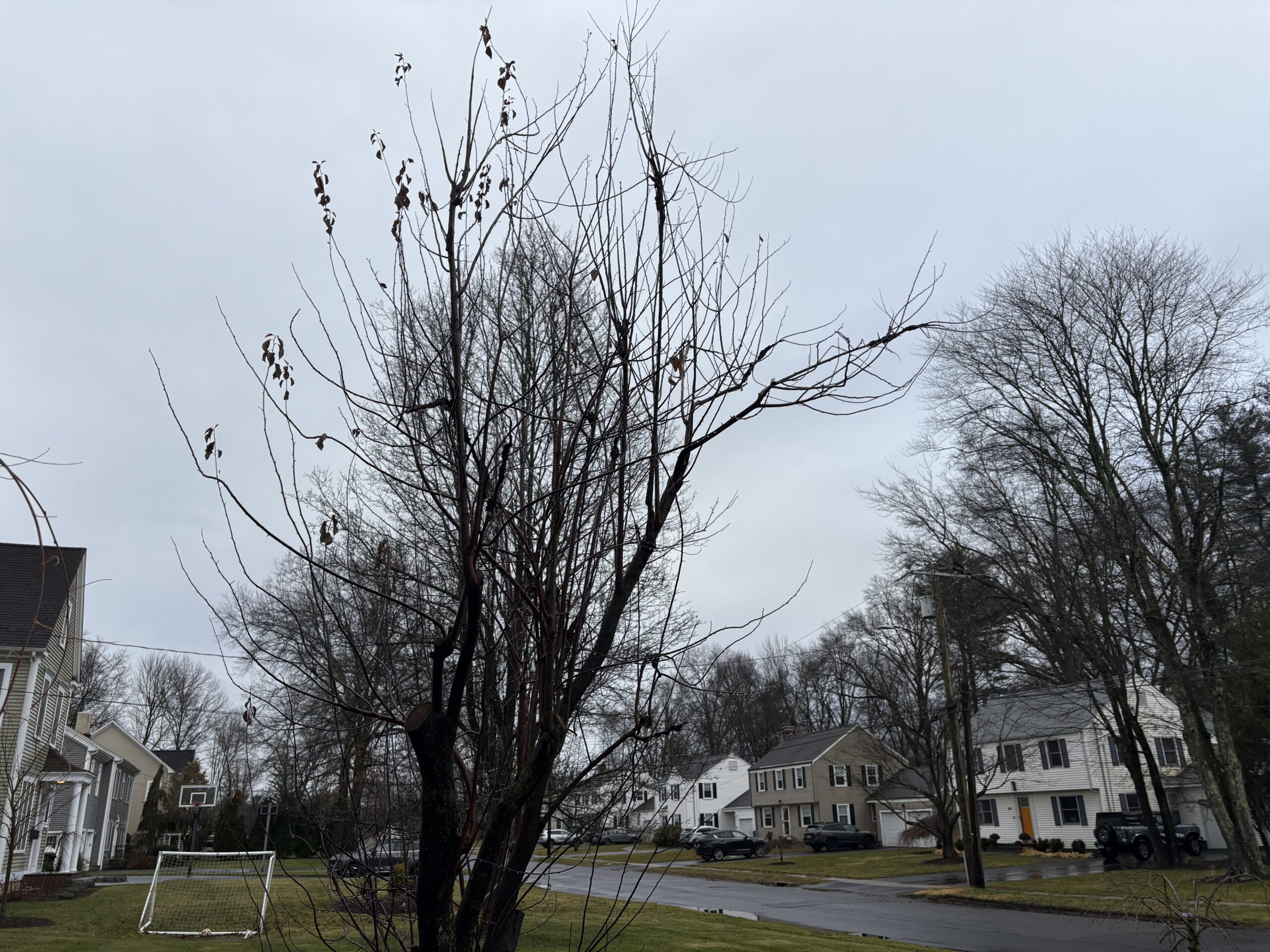‘Lost in Translation’: ASD Launches Awareness Campaign Focused on Health Care and Education Communities

Audio By Carbonatix

Jeff Bravin, executive director of American School for the Deaf, announces the launch of the "Lost in Translation" campaign. Photo credit: Ronni Newton
A grant-funded program unveiled at a press conference at the American School for the Deaf in West Hartford on Tuesday will seek to create greater understanding in the health care and education fields about communication with the deaf, hard of hearing, and DeafBlind community.
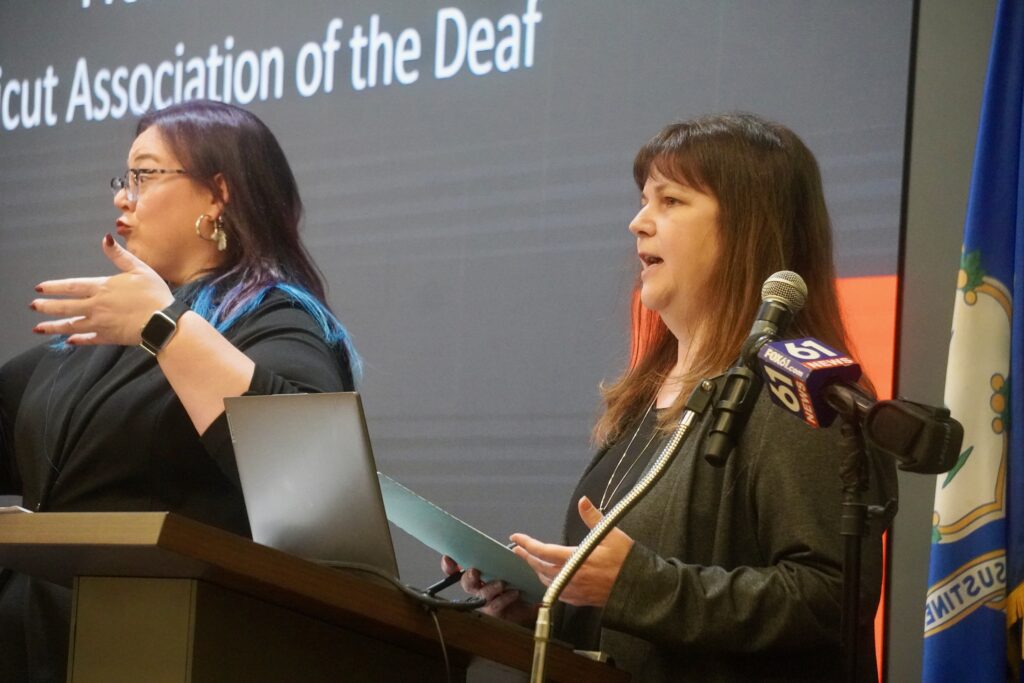
Department of Aging and Disability Services Commissioner Amy Porter speaks at the unveiling of the “Lost in Translation” campaign while an ASL interpreter translates her speech. Photo credit: Ronni Newton
By Ronni Newton
Jeff Bravin, the executive director of the American School for the Deaf, stood at the podium in the Visual Communications Center on the West Hartford campus Tuesday morning, announcing an exciting new campaign and speaking to the audience in American Sign Language while his words were broadcast by speaker to the press, state officials, and others in the room who don’t understand ASL.
An ASL interpreter was present to translate the spoken words of other speakers so the deaf and hard of hearing attendees could understand what was being said.
At the end of the presentation, a video was shown. The actor in the video, a member of the ASD community, plays a patient in the hospital who is desperately crying for help. If you watch the video (click here) don’t think there’s a problem with the audio on your device; the point is that there’s no sound. The patient was signing “help,” but none of the health care workers could understand him. And he couldn’t hear them.
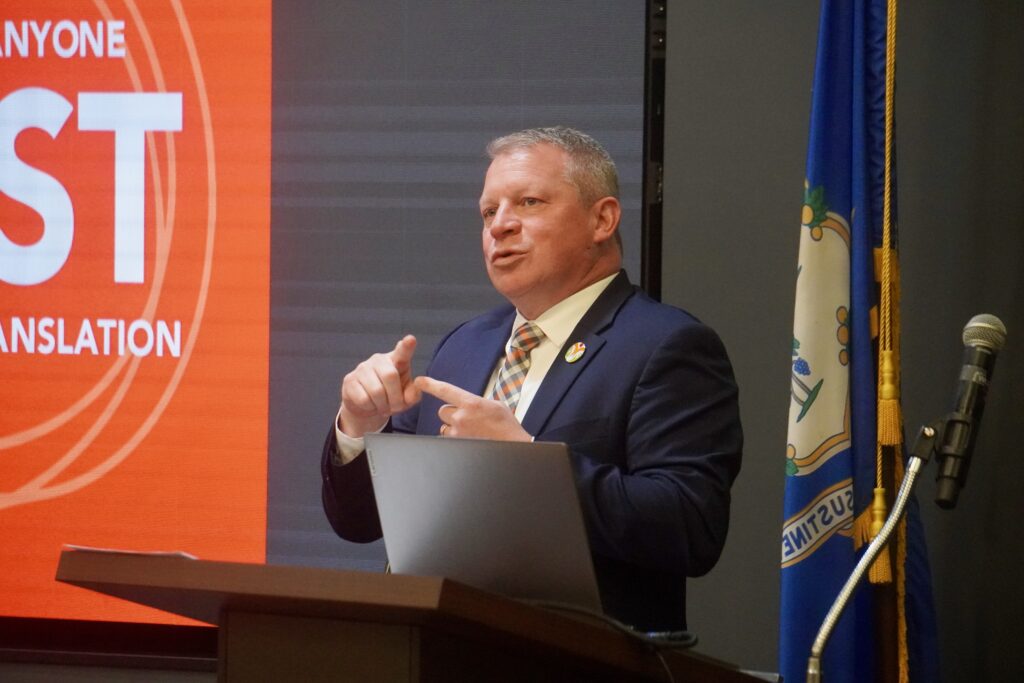
Jeff Bravin, executive director of American School for the Deaf, announces the launch of the “Lost in Translation” campaign. Photo credit: Ronni Newton
“Imagine what it must feel like to be transported to the hospital in an ambulance and not know what paramedics all around you are saying, or to experience the same feeling of isolation while lying in an emergency room without any loved ones around,” Bravin said. The communications challenge translates to education as well, because students who are deaf can’t hear what’s being said around them, and don’t always know, or have access to the support they need.
“That is what we call being ‘lost in translation,'” said Bravin, introducing the campaign that was launched Tuesday. Through “Lost in Translation,” ASL interpreters will be provided free of charge to members of the Connecticut Hospital Association for a three-month pilot period beginning March 1, between the hours of 5 p.m. and midnight, when it is often more difficult to access those services.
The $1 million American Rescue Plan Act (ARPA) grant, which is being administered by the Connecticut Office of Aging and Disability Services, will also include public service announcements such as the video shown Tuesday morning, and an intensive social media campaign.
Students who attend ASD have resources available that those who attend other schools may not. Another key element of the Lost in Translation campaign is to ensure that a Language Communications Plan (LCP) is completed for all deaf, hard of hearing, or DeafBlind students as part of their Planning and Placement Team (PPT) or 504 program.
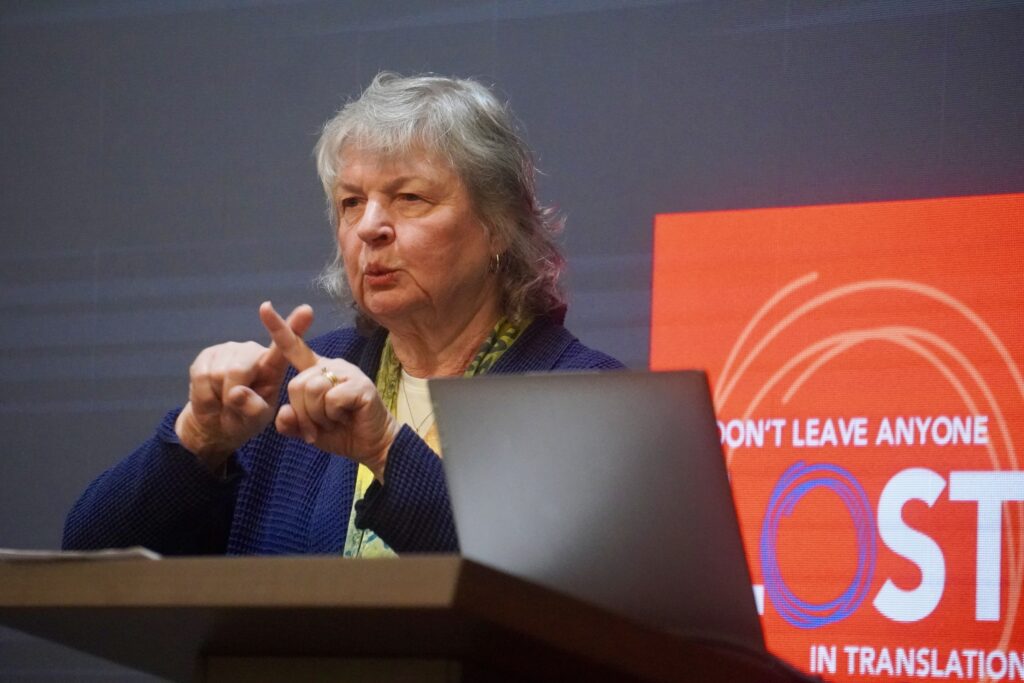
Luisa Soboleski, presidente of the Connecticut Association of the Deaf. Photo credit: Ronni Newton
Luisa Soboleski, who is retired from ASD and is currently president of the Connecticut Association of the Deaf, said she had access to interpreters when her children were born in Hartford in the 1980s, but that communications access is less common today. A friend who recently gave birth in a hospital in the western part of Connecticut did not have an interpreter, she said.
“With ARPA funds, we want to help the deaf folks become their own self advocates,” Soboleski said. She also noted that 90% of deaf children are born into hearing families who then have to figure out how to communicate with their deaf babies.
“We want to. improve the system,” she said, not blame. “2024 is about time these things are going to happen.”
Department of Aging and Disability Services Commissioner Amy Porter said they are committed to serving as a resource, and during COVID, existing issues were amplified. “I know our organization and the legislature is particularly interested in figuring out what we can do differently.”
Porter said leveraging ARPA dollars is critical, and has already been used to help gather data and develop strategies for access in medical settings. “Now we have some funding that we can put forward to support … to help folks have that ‘aha moment.'” This campaign will be able to do that, she said.
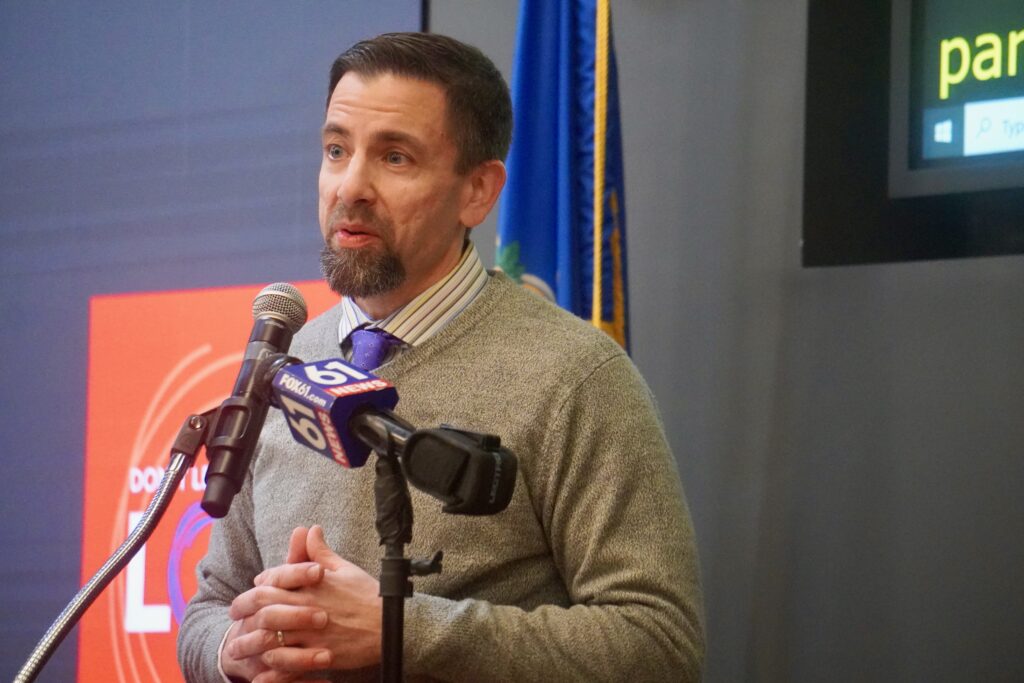
Bryan Klimkiewicz, the director of Special Education for the state Department of Education. Photo credit: Ronni Newton
Bryan Klimkiewicz, the director of Special Education for the state Department of Education praised ASD for their work on launching this campaign and for pushing for LCPs. “Having these in place is great but we know there’s a lot more work to do … to ensure that no students are lost in translation,” he added.
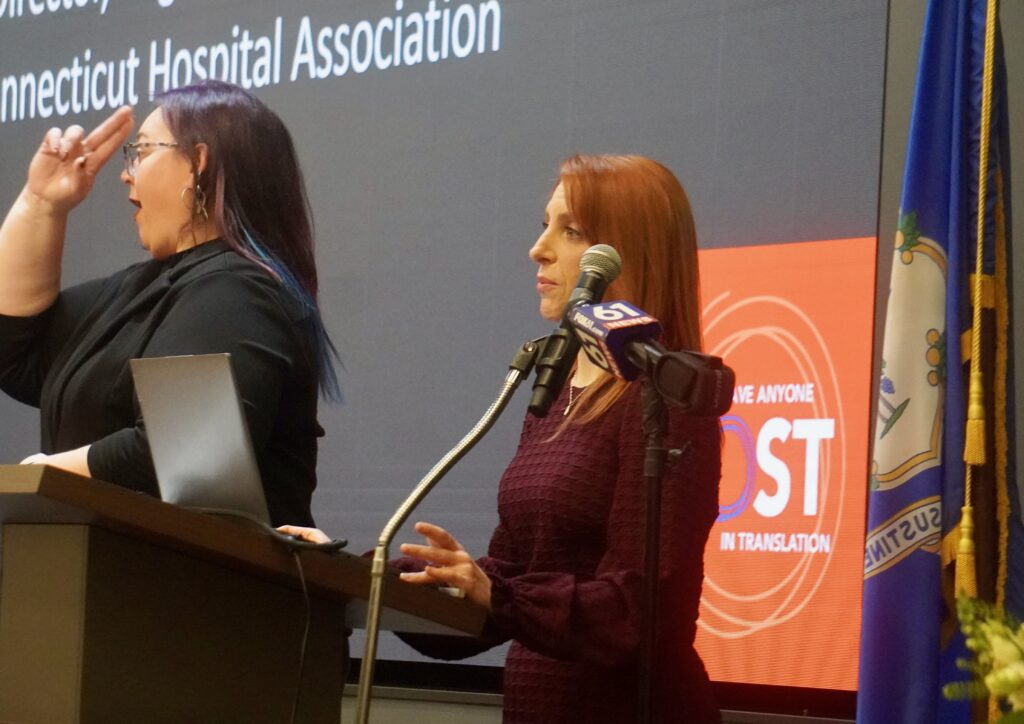
Marielle Daniels, director of Regulatory Advocacy for the Connecticut Hospital Association. Photo credit: Ronni Newton
Marielle Daniels, director of Regulatory Advocacy for the Connecticut Hospital Association, said the pilot interpretation program is open to any of their members who would like to participate and they are eager for the rollout.
“No one in the deaf, hard of hearing, or DeafBlind community should feel invisible,” said Jon Rubin, president of ASD’s Board of Directors. He invited community leaders in the education and health care segments to come together to recognize the problem, and to make a commitment.
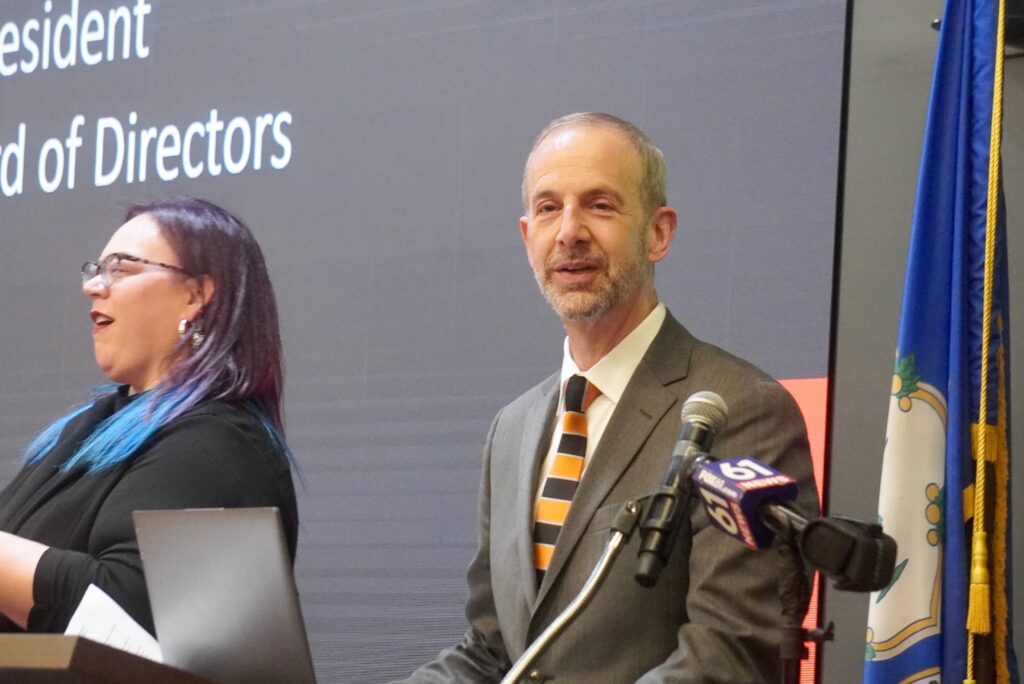
Jon Rubin, president of ASD Board of Directors. Photo credit: Ronni Newton
Bravin said the ultimate goal is for all hospitals in the state to pledge to provide full communications access, and for all school districts in the state to provide full access to and equity in quality education.
“Today it is all about moving from isolation to inclusion,” Bravin said.
Like what you see here? Click here to subscribe to We-Ha’s newsletter so you’ll always be in the know about what’s happening in West Hartford! Click the blue button below to become a supporter of We-Ha.com and our efforts to continue producing quality journalism.



